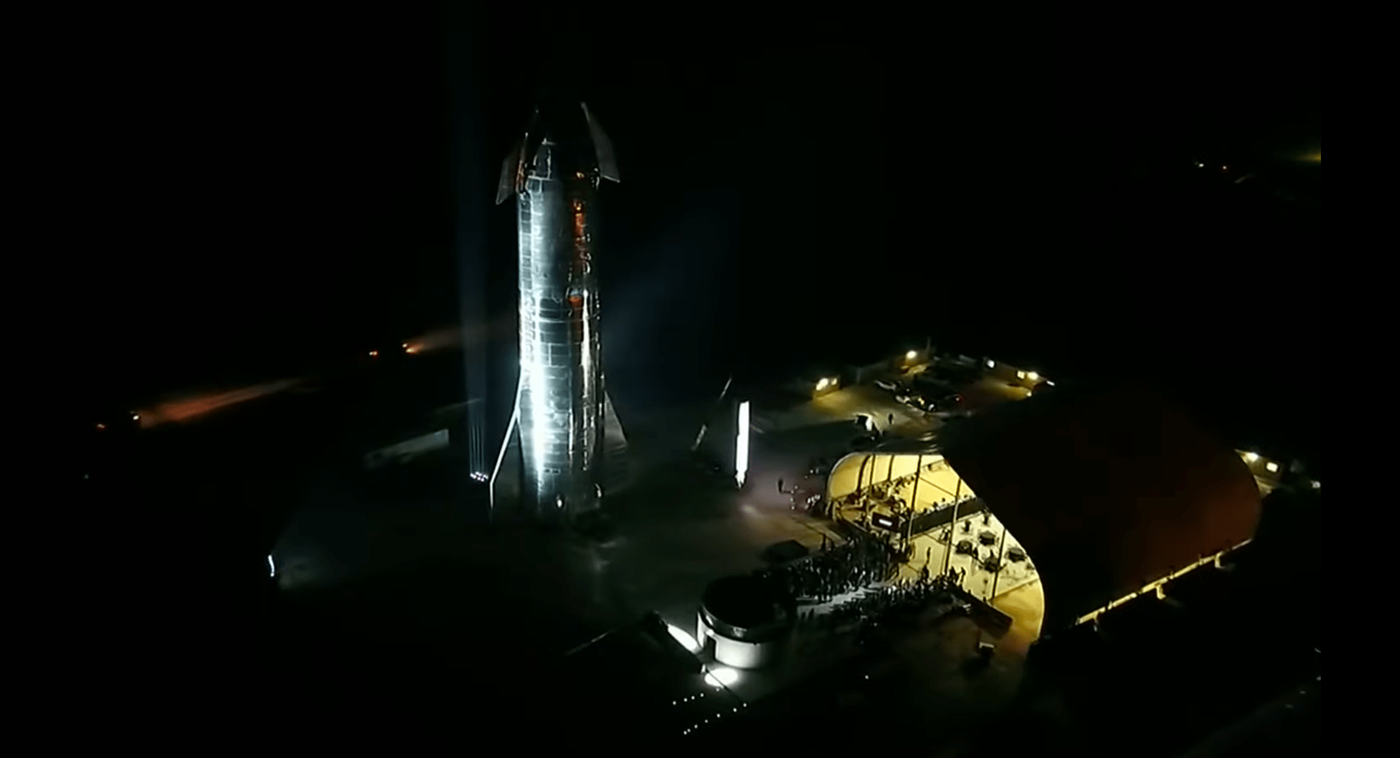Elon Musk Shows Off SpaceX's Shiny New Starship
If you’ve been paying any attention to SpaceX lately, then you’ve undoubtedly caught wind of the plethora of controlled launching and landing tests involving the commercial space company’s Starhopper starship project – an ongoing endeavor to construct a reusable space vehicle platform that could one day transport humankind to other worlds besides Earth.
Image Credit: SpaceX/YouTube
Over the course of these flight tests, the reflective stainless-steel Starhopper has gradually flown higher and higher into the atmosphere before returning back to solid ground to conduct a soft landing. But as of this weekend, SpaceX CEO Elon Musk elucidated how the futuristic starship has been inching ever so closer to its first sub-orbital and then orbital test flights.
SpaceX fans gathered around a stage at the company’s Boca Chica, Texas facility on Saturday to listen to Musk talk about the company’s future plans for Starhopper. Behind him stood the shiny spacecraft itself; and right beside it, a Falcon 1 rocket to commemorate the 11th anniversary of a SpaceX rocket reaching orbit around Earth for the first Time.
Perhaps unsurprisingly, Musk spent time discussing the Starhopper starship and its planned uses as SpaceX looks to the future with bright plans for colonizing other worlds, such as Mars and beyond.
“Consciousness is a very rare and precious thing, and we should take whatever steps we can to preserve the light of consciousness,” Musk said. “I think we should do our very best to become a multiplanetary species and extend consciousness beyond Earth, and we should do it now.”
Of course, for this to happen, we’d need to rethink the way we launch missions into space. Every aspect of the launch vehicle and the accompanying spacecraft would need to be entirely reusable such that missions could go to other worlds and return back home if need be. This has been a particularly challenging endeavor, to say the least.
“The critical breakthrough that's needed for us to become a spacefaring civilization is to make space travel like air travel,” Musk continued. “A rapidly reusable rocket is basically the holy grail of space.”
Related: SpaceX's Starhopper prototype conducts its first untethered flight
This is where Starhopper comes into play. The starship will be capable of leaving Earth’s atmosphere atop a Falcon Super Heavy rocket and then landing on another world’s surface to deliver its living payload. After which, that same starship could leave the other planet’s atmosphere to return home if need be. Generating the power necessary for this performance will be a series of Raptor engines, which SpaceX is currently ramping up production of.
While the Starhopper starship has only flown to a maximum altitude of 150 meters thus far, Musk hopes to raise the bar to a suborbital altitude of 12 miles sometime in the next one or two months with another launch reaching orbital altitude sometime in the next six months.
While it remains to be seen when Starhopper would send humans to other worlds officially, it’s worth noting that Japanese billionaire Yusaku Maezawa has already purchased seats on SpaceX’s upcoming space vehicle to become the company’s first space tourist. The trip could transpire by 2023, enabling Maezawa and a handful of passengers to fly around the Moon.
It should be interesting to see how the Starship project comes together, especially given the apparent growing interest in colonizing the Moon and Mars, among other worlds in our solar system.
Source: New York Times, Wired, YouTube









